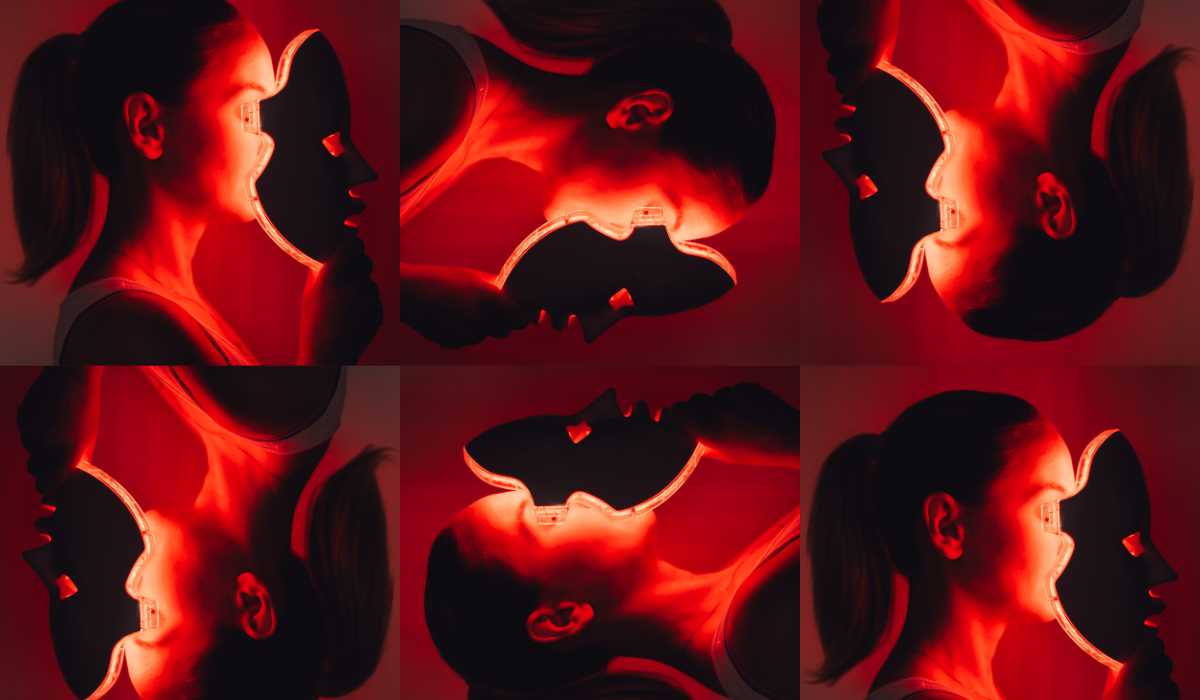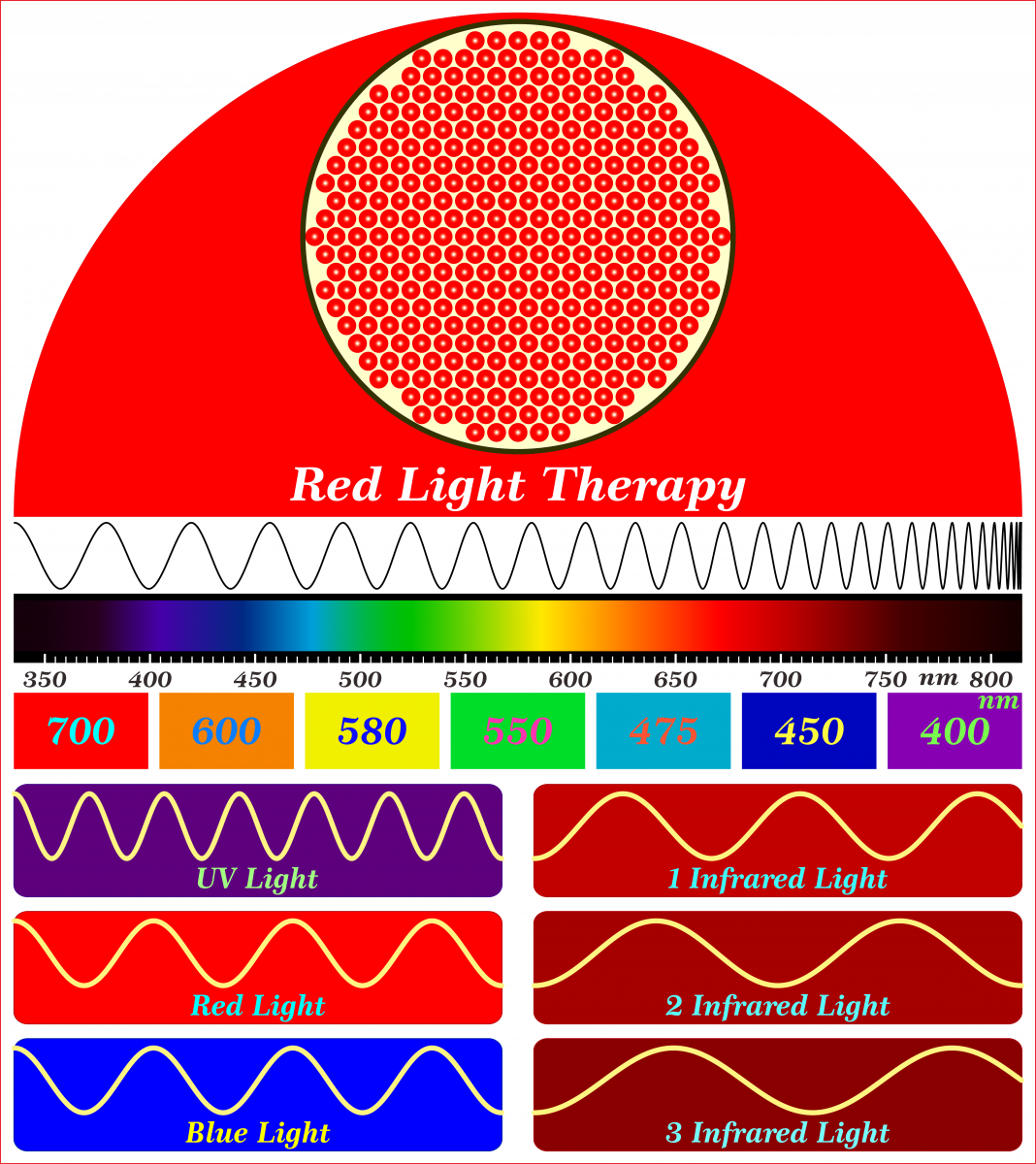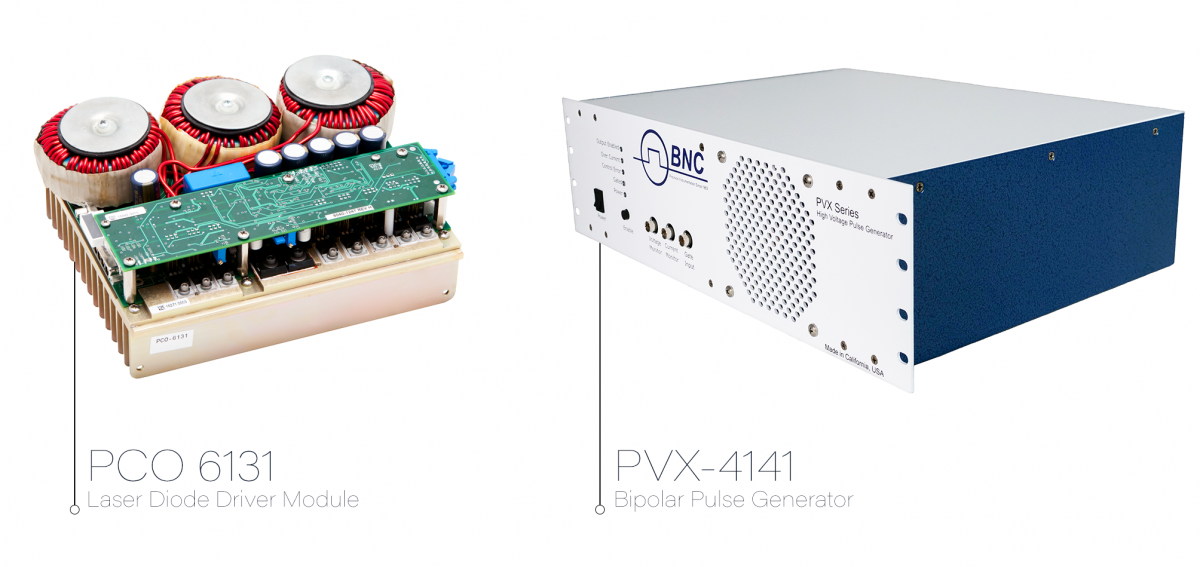August 14, 2024 - What is Red Light Therapy & Where Did it Come From?
Red light therapy has been steadily trending during recent years as a therapy for anti-aging and inflammation. Reviews have been mixed - but mostly positive - and skepticism has been high. Yet it turns out that RLT has deeper roots in the health industry as a possible relief for issues ranging from tendonitis to dementia. No matter the variation in its uses, it's important to note that the prevailing commonality amongst red light therapy discussions has been the controversy it tends to stir. And as a general rule of thumb, it's best to approach contention by starting with the basics.

Low level laser therapy (LLLT) and photobiomodulation (PBM) are alternate names to red light therapy that are more commonplace in scientific journals. Cold laser therapy is another, perhaps more casual term. It involves the use of low level red or near-infrared light directed at a fixed point or broad area to treat certain ailments1. Red light therapy is believed to work by speeding up ATP production after the cytochrome c oxidase is stimulated by the light and quickens the electron transport chain2. There is evidence that this increases cell proliferation, vascularization, and osteoblastic activity3.
The discovery of red light therapy is credited to Endre Mester, who stumbled upon accelerated hair growth and wound recovery when trying - and failing - to use laser for tumor eradication in 19674. Mester continued to dedicate his career to clinical laser use and inspired a long line of accomplished researchers in his wake.
There's a lot of silence regarding the research or use of LLLT in the US in the decades following its discovery in 1967. Various sources vaguely mention the use of LLLT for sports injuries and arthritis in the 1980s but do not specify where. Given that the US and western European countries had not yet allocated substantial resources towards LLLT research by this time, it's likely outside these regions where such major developments occured5. Russia, however, was taking the lead. In his paper titled "Low-Level Laser Therapy in Russia: History, Science and Practice." Dr. Sergey Vladimirovich Moskvin claims the following:
...from 1965 to 1972 several dozens of scientific conferences were held, hundreds of studies were published...and since 1974 LLLT is included in the standard of state medical care...[and] about 400,000 laser therapeutic devices are used in Russian practical healthcare [today]...5
Published studies indicate that it's not until the 1990s that low level laser therapy began to pick up slack in the United States. It's reasonable to assume that research had been ongoing, but one event stands more prominently on the LLLT timeline as a catalyst to its resurgence.
In 1993, a company sent NASA a laser device to test on plant health in space6. Amongst increased growth rates, the astronauts also noticed that lesions on their hands were healing faster as they gleaned exposure to the laser light while tending to plants7. A series of similar studies through NASA showed possibility for LLLT as a useful therapy to use in orthopedics, yet studies were flagged as inconclusive6.

It seems as if inconclusive studies are the theme in regards to clinical research of LLLT in the United States. Insurance companies such as Aetna8, Florida Blue9, and Blue Shield of CA10 only cover LLLT as a preventative against oral mucositis for individuals with certain immunodeficiencies. In no case does Kaiser cover LLLT11. Other insurance companies issued similar statements on the basis that the evidence is lacking, research parameters are not controlled, study standards are not met, etc.
Despite the verdicts of the insurance companies, low level laser therapy devices' development for clinical practice was cleared by the FDA in 20021. One clinical laser manufacturing company markets LLLT for both its cosmetic and pain management benefits; they promote the argument that LLLT could alleviate the opioid crisis with its benefits to help acute and chronic pain2. Other manufacturers assertions read similarly, as extraneous claims are regarded as fraudulent and marketing a medical device without a solid backbone walks a fine line. It is unclear whether or not fraudulent claims have relation to the many existing incomplete studies that suggest LLLT alleviates symptoms from ailments such as dementia12, tendinopathy12, alopecia12, wound healing13, bone regeneration3 - the list goes on.
Understanding the research limitations paints a clearer picture as to why red light therapy has caused such controversy - at least within the US. It's a treatment that poses a plethora of benefits with little of the concrete studies necessary to push it through the gates and into regular clinical practice. It's up to everyone's own interpretation why studies lack consistency or whether or not the research should be labeled as inconclusive in the first part. Perhaps in the decade to come, published research will give us and the FDA more to think on.
A Background of the Machinery Used for Laser Applications
Current pulsers are most often used to drive current-operated semiconductors such as laser diodes and LEDs. Pulsed-current drivers accept energy from a power supply, store it in capacitors or inductors, and then release it in pulses that follow the trigger input.
A basic pulsed-current driver consists of:
- A fast electronic switch that creates the pulses
- An energy storage system that supplies the peak pulse current required
- A logic-level gate or trigger input controlling the width and repetition rate of the pulses
A more integrated driver may add:
- An internal pulse engine that generates trigger pulses
- A current monitor that facilitates viewing the pulse on an oscilloscope
- A power supply that keeps the energy storage system charged
Laser diodes output a luminosity that is proportional to the current that flows through them. For this reason it is important that the current is carefully controlled, and the voltage varied to maintain the desired current shape and amplitude. This makes laser diodes somewhat unique because in most other applications, loads operate at certain voltages and current is varied to maintain voltage.
BNC/DEI designs and manufactures continuous-current and pulsed-current laser diode drivers that deliver electrical energy in which the current is controlled.
Models offer such features as color touchscreens, keypads, and remote computer control. They are available for purchase in various packages including boards, modules, rackmount and benchtop instruments. Check out our line of laser diode drivers and high voltage pulsers through this link.

References
- Dr. Chelsea Pinto, DDS. (2023, December 13). What is Low Level Laser Therapy? [Video]. YouTube. https://www.youtube.com/watch?v=RGjHgc2URqMDr. Chelsea Pinto, DDS. (2023, December 13). What is Low Level Laser Therapy? [Video]. YouTube. https://www.youtube.com/watch?v=RGjHgc2URqM
- AKELA (n.d.) Laser Therapy. Akela Laser Corporation. https://www.akelalaser.com/markets/medical/laser-therapy/
- Kheiri, A., Amid, R., Kheiri, L., Namadari, M., Mojahedi, M., Kadkhodazadeh, M. (Sept. 2020). Effect of Low-Level Laser Therapy on Bone Regeneration of Critical-Size Bone Defects: A Systematic Review of In Vivo Studies and Meta-Analysis. Archives of Oral Biology. https://www.sciencedirect.com/science/article/abs/pii/S0003996920301606
- Hamblin, M. (14 Dec 2016). Photobiomodulation or low-level laser therapy. Wiley Online Library. https://onlinelibrary.wiley.com/doi/10.1002/jbio.201670113
- Moskvin S. V. (2017). Low-Level Laser Therapy in Russia: History, Science and Practice. Journal of lasers in medical sciences, 8(2), 56–65. https://doi.org/10.15171/jlms.2017.11
- Cotler H. B. (2015). A NASA discovery has current applications in orthopedics. Current orthopedic practice, 26(1), 72–74. https://doi.org/10.1097/BCO.0000000000000196
- Health and Medicine. (19 May, 2022). NASA Research Illuminates Medical Uses of Light. NASA Technology Transfer Program. https://spinoff.nasa.gov/NASA-Research-Illuminates-Medical-Uses-of-Light
- Aetna Statement
- Florida Blue Statement
- Blue Shield of CA Statement
- Kaiser Statement
- Pagan, C. N., Rosenbaum, L. (14 May, 2024). Red Light Therapy: What Is It? WebMD. https://www.webmd.com/skin-problems-and-treatments/red-light-therapy
- Ferraresi, C., Hamblin, M. R., & Parizotto, N. A. (2012). Low-level laser (light) therapy (LLLT) on muscle tissue: performance, fatigue and repair benefited by the power of light. Photonics & lasers in medicine, 1(4), 267–286. https://doi.org/10.1515/plm-2012-0032
